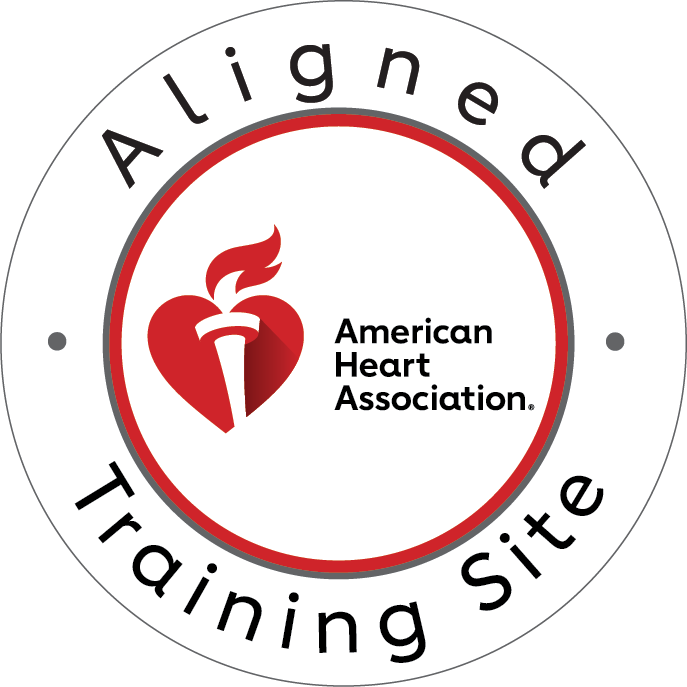In the realm of emergency medical care, few acronyms carry as much weight as CPR. It’s a term that is frequently mentioned in discussions about cardiac emergencies, first aid training, and healthcare protocols. Yet, for many individuals, the meaning behind the acronym remains shrouded in mystery. What exactly does CPR stand for, and why is it such a crucial aspect of life-saving interventions?
The answer lies in understanding the fundamental principles of CPR—Cardiopulmonary Resuscitation. At its core, CPR is a technique designed to maintain blood circulation and oxygenation to vital organs when the heart has stopped beating or is beating ineffectively. By delivering a combination of chest compressions and rescue breaths, CPR aims to sustain life until advanced medical care can be administered.
But let’s break it down further. What do “cardiopulmonary” and “resuscitation” really mean in the context of CPR?
“Cardiopulmonary” refers to the heart (cardio) and lungs (pulmonary), highlighting the dual focus of CPR on these vital organs. The heart is responsible for pumping oxygen-rich blood throughout the body, while the lungs facilitate the exchange of oxygen and carbon dioxide. In a cardiac emergency, such as a heart attack or sudden cardiac arrest, both the heart and lungs are compromised, necessitating prompt intervention to restore their function.
“Resuscitation” encompasses the actions taken to revive or restore life. In the context of CPR, resuscitation involves reviving the heart’s pumping action and restoring effective breathing. It’s about jump-starting the body’s natural processes to sustain life and prevent irreversible damage to vital organs.
Understanding these core principles of CPR is essential for anyone who may find themselves in a situation where swift action is needed to save a life. Whether you’re a healthcare professional, a first responder, or a bystander witnessing a medical emergency, knowing what CPR stands for is just the first step in being prepared to act decisively when every second counts.
II. Historical Background
The story of CPR spans centuries, shaped by innovation, scientific discovery, and a relentless pursuit to save lives. While the concept of resuscitation dates back to ancient times, it wasn’t until the modern era that CPR as we know it began to take shape.
In ancient civilizations, various methods of artificial respiration and chest compressions were attempted to revive individuals who had stopped breathing or had no discernible pulse. These early efforts, often rooted in folklore and superstition, laid the groundwork for future advancements in resuscitative techniques.
Fast forward to the 20th century, and we see the emergence of more systematic approaches to resuscitation. In the 1960s, pioneering research by Dr. Peter Safar, Dr. James Elam, and Dr. William Kouwenhoven laid the foundation for modern CPR techniques. Their groundbreaking work demonstrated the effectiveness of combining chest compressions with rescue breaths to maintain circulation and oxygenation during cardiac arrest.
The 1970s marked a pivotal moment in the history of CPR with the introduction of standardized training programs and the establishment of organizations dedicated to promoting CPR education and certification. The American Heart Association (AHA) and the American Red Cross played instrumental roles in disseminating CPR training materials and guidelines to healthcare professionals and the general public.
As technology advanced, so too did the tools available to support CPR efforts. Automated External Defibrillators (AEDs) became more accessible, allowing bystanders to administer life-saving shocks to individuals experiencing sudden cardiac arrest. The integration of AEDs into public spaces, such as airports, schools, and sports arenas, has significantly improved survival rates for cardiac arrest victims.
Today, CPR continues to evolve, guided by ongoing research, technological advancements, and efforts to enhance public awareness and training. From the development of hands-on CPR techniques to the use of mobile applications for CPR instruction, innovation remains at the forefront of resuscitation efforts.
Looking back on the history of CPR, it’s clear that each milestone represents a step forward in our collective journey to save lives. From ancient civilizations to the present day, the quest to master the art of resuscitation has been driven by a shared commitment to turning the tide against sudden cardiac arrest and other life-threatening emergencies.
III. Core Principles of CPR
Now that we’ve explored the historical context of CPR, it’s time to delve into its core principles. At its essence, CPR is about sustaining life by maintaining blood circulation and oxygenation to vital organs. This requires a combination of chest compressions and rescue breaths, each serving a critical role in the resuscitation process.
- Providing Circulation: CPR begins with chest compressions, which are designed to mimic the pumping action of the heart. By applying rhythmic pressure to the chest, responders can help circulate oxygen-rich blood throughout the body, delivering vital nutrients and removing waste products. The goal is to keep blood flowing to essential organs, such as the brain and heart, to prevent irreversible damage during a cardiac emergency.
- Ensuring Oxygenation: In addition to chest compressions, CPR involves providing rescue breaths to supply oxygen to the lungs. These breaths help oxygenate the blood, replenishing the body’s oxygen supply and sustaining cellular function. By delivering oxygen to vital tissues, responders can mitigate the risk of hypoxia (oxygen deprivation) and maintain organ function until normal breathing is restored.
- Importance of Early Intervention: Time is of the essence when it comes to CPR. Research has shown that initiating CPR promptly can significantly improve survival rates for cardiac arrest victims. Every minute without CPR decreases the chances of survival by 7% to 10%, underscoring the critical importance of swift action. By starting CPR immediately and continuing uninterrupted until advanced medical help arrives, responders can maximize the chances of a positive outcome.
These core principles form the foundation of effective CPR practice, guiding responders in their efforts to save lives during cardiac emergencies. However, mastering CPR requires more than just understanding these principles—it requires practical skills, training, and confidence to act decisively in high-pressure situations.
IV. Who Can Perform CPR?
CPR is a life-saving skill that can be performed by a wide range of individuals, from trained healthcare professionals to laypersons with no medical background. In a cardiac emergency, the ability to administer CPR promptly can make a crucial difference in the outcome for the victim. Let’s explore who can perform CPR and the importance of training and certification in preparing individuals to respond effectively in emergencies.
- Healthcare Professionals: Healthcare professionals, including doctors, nurses, paramedics, and emergency medical technicians (EMTs), are trained extensively in CPR as part of their professional education, and certification requirements. They possess the knowledge, skills, and experience to perform CPR in a variety of clinical settings, from hospitals to pre-hospital environments such as ambulances and emergency departments. For healthcare professionals, CPR is not just a skill—it’s an essential component of their clinical practice, allowing them to intervene rapidly and effectively during medical emergencies.
- Laypersons and Bystanders: While healthcare professionals are often the first responders in medical emergencies, bystanders and laypersons also play a crucial role in delivering timely CPR. Studies have shown that bystander CPR can more than double the chances of survival for cardiac arrest victims. With proper training and guidance, anyone can learn to perform CPR and make a difference in saving lives within their communities. Many organizations offer CPR training programs specifically designed for laypersons, teaching essential skills such as chest compressions, rescue breaths, and how to use an automated external defibrillator (AED).
- Importance of CPR Training and Certification: Training and certification in CPR provide individuals with the knowledge, skills, and confidence to respond effectively in emergencies. CPR courses cover essential topics such as recognizing cardiac arrest, activating the emergency response system, performing CPR, and using an AED. Hands-on practice sessions allow participants to hone their skills under the guidance of qualified instructors, ensuring competency in CPR techniques. Upon successful completion of a CPR course, participants receive certification that validates their ability to perform CPR according to established guidelines.
In summary, CPR is a life-saving intervention that can be performed by both healthcare professionals and laypersons. Whether you’re a doctor in a hospital setting or a bystander witnessing a cardiac emergency in a public place, knowing how to perform CPR can mean the difference between life and death for someone in need. By investing in CPR training and certification, individuals can empower themselves to take action and make a positive impact in emergencies. In the next section, we’ll explore the steps involved in performing CPR and the importance of proper technique in maximizing its effectiveness. Join us as we continue our journey to demystify CPR and unlock the secrets to successful resuscitation.
V. Steps of CPR
Performing CPR involves a series of systematic steps designed to maintain blood circulation and oxygenation to vital organs. Whether you’re a healthcare professional or a layperson, understanding and following these steps correctly are essential for maximizing the chances of survival for a cardiac arrest victim. Let’s explore the key steps of CPR and the importance of proper technique in delivering effective resuscitation.
Assess the Scene and Victim: Before initiating CPR, it’s crucial to assess the scene for any potential hazards or dangers. Ensure that the area is safe for both you and the victim. Next, assess the victim for responsiveness by tapping their shoulders and asking loudly, “Are you okay?” If the victim is unresponsive and not breathing normally, proceed to the next steps of CPR.
Activate Emergency Medical Services: If you’re alone, activate the emergency response system by calling for help or instructing someone nearby to do so. Time is of the essence in a cardiac emergency, so it’s essential to summon professional medical assistance as quickly as possible. Provide clear and concise information about the victim’s condition and location to ensure a rapid response from emergency medical services.
Provide Rescue Breaths (if trained): If you’re trained in CPR and comfortable providing rescue breaths, incorporate them into the CPR sequence. After every 30 compressions, deliver two rescue breaths to the victim’s mouth, ensuring a tight seal and watching for chest rise with each breath. If you’re unable or unwilling to provide rescue breaths, continue with chest compressions only (hands-only CPR).
Use an Automated External Defibrillator (AED) (if available): If an AED is available, follow the device’s prompts to administer a shock if indicated. AEDs are designed to analyze the heart rhythm and deliver a shock to restore normal cardiac activity in cases of ventricular fibrillation or pulseless ventricular tachycardia. Continue CPR immediately after delivering the shock, following the AED’s instructions.
Continue CPR Until Help Arrives: Continue CPR cycles of chest compressions and, if trained, rescue breaths until emergency medical services arrive or until the victim shows signs of responsiveness, such as breathing normally or moving spontaneously. Minimize interruptions in CPR to maintain blood flow and optimize the chances of survival.
By following these steps of CPR and practicing proper techniques, responders can maximize the chances of a positive outcome for cardiac arrest victims. Whether you’re a healthcare professional or a layperson, being prepared to perform CPR can make a lifesaving difference in emergencies.
VI. Common Myths and Misconceptions About CPR
Despite the widespread awareness of CPR, several myths and misconceptions persist regarding its effectiveness and proper implementation. Addressing these misconceptions is essential for promoting confidence and readiness among potential responders. Let’s debunk some of the most common myths surrounding CPR and clarify the facts to empower individuals to take action in cardiac emergencies.
Myth: CPR is only effective if performed by healthcare professionals.
Fact: While healthcare professionals receive extensive training in CPR, bystander CPR performed by laypersons can also be highly effective. Studies have shown that immediate bystander CPR can significantly increase the chances of survival for cardiac arrest victims, highlighting the importance of training and empowering the general public to respond in emergencies.
Myth: Rescue breaths are necessary for effective CPR.
Fact: While rescue breaths can enhance oxygenation and circulation during CPR, hands-only CPR (chest compressions without rescue breaths) is equally effective, especially for bystanders with limited training or concerns about performing mouth-to-mouth resuscitation. Hands-only CPR focuses on providing continuous chest compressions to maintain blood flow and maximize the chances of survival until professional help arrives.
Myth: CPR always results in revival and full recovery.
Fact: While CPR can be highly effective in restoring circulation and oxygenation to vital organs, it does not guarantee survival or full recovery. The outcome of CPR depends on various factors, including the underlying cause of cardiac arrest, the timeliness of intervention, the quality of CPR performed, and the availability of advanced medical care. Despite the best efforts of responders, not all cardiac arrest victims will survive, but CPR can still make a significant difference in their chances of survival.
Myth: CPR can cause harm or exacerbate injuries.
Fact: When performed correctly according to established guidelines, CPR is unlikely to cause harm to the victim. The benefits of CPR in restoring circulation and oxygenation generally outweigh the risks, particularly in cases of cardiac arrest where immediate intervention is critical. CPR training emphasizes proper technique and safety measures to minimize the risk of injury to both the responder and the victim.
By debunking these common myths and misconceptions about CPR, we can empower individuals to overcome hesitations and take decisive action in cardiac emergencies. Proper CPR training, coupled with public awareness and confidence in one’s ability to respond effectively, is key to improving outcomes for cardiac arrest victims.
VII. The Importance of Ongoing CPR Training and Certification
CPR skills are perishable, and regular training and certification are essential for maintaining readiness and competence among responders. Whether you’re a healthcare professional or a layperson, staying up-to-date with the latest CPR guidelines and techniques can mean the difference between life and death in an emergency. Let’s explore why ongoing CPR training and certification are critical for preparedness and effectiveness in responding to cardiac emergencies.
Updated Guidelines and Best Practices: CPR guidelines are periodically updated based on the latest scientific evidence and research findings. Staying informed about these updates ensures that responders are equipped with the most current information and techniques for delivering effective CPR. Regular training sessions provide opportunities to review changes to CPR protocols, reinforce skills, and address any misconceptions or outdated practices.
Skill Retention and Proficiency: Like any skill, CPR proficiency diminishes over time without practice. Ongoing training allows responders to maintain and refine their CPR skills, ensuring that they can perform confidently and effectively in real-life situations. Hands-on practice sessions provide valuable opportunities to hone technique, improve muscle memory, and simulate the stressors of a cardiac emergency, enhancing readiness and response capabilities.
Confidence and Preparedness: Regular CPR training builds confidence and preparedness among responders, empowering them to take swift and decisive action in emergencies. Knowing what to do and how to do it instills a sense of confidence and competence, reducing hesitation and uncertainty during critical moments. Confidence in one’s ability to perform CPR can make a significant difference in the outcome for a cardiac arrest victim, maximizing the chances of survival.
Legal and Ethical Considerations: CPR certification may be required for certain professions or roles, such as healthcare providers, lifeguards, teachers, and childcare providers. Maintaining current certification ensures compliance with legal and regulatory requirements and may be a prerequisite for employment or volunteer opportunities. Additionally, certified responders have a moral and ethical obligation to intervene in emergencies and provide assistance to those in need.
Community Preparedness and Resilience: CPR training extends beyond individual readiness—it contributes to building a resilient and prepared community. When more individuals are trained and certified in CPR, the likelihood of bystander intervention and survival increases. By promoting CPR education and awareness, communities can create a culture of preparedness where individuals are empowered to respond effectively to cardiac emergencies and save lives.
In conclusion, CPR certification in Kansas City is an indispensable component of preparedness for individuals across various professions and roles. By obtaining and maintaining CPR certification through reputable training sites such as CPR Kansas City, responders can ensure they are equipped with the necessary knowledge and skills to act confidently and effectively in emergencies. Whether you’re a healthcare professional, educator, childcare provider, or concerned citizen, CPR certification empowers you to make a lifesaving difference in your community. With stress-free and hands-on classes offering initial certifications and renewals in BLS for Healthcare Providers, ACLS, and PALS, as well as CPR and First Aid courses, CPR Kansas City provides the tools and training needed to become a competent and prepared responder. Join us in our commitment to promoting CPR education and awareness, ensuring that every individual is prepared to respond when every second counts. Best CPR in Kansas City is guaranteed!




